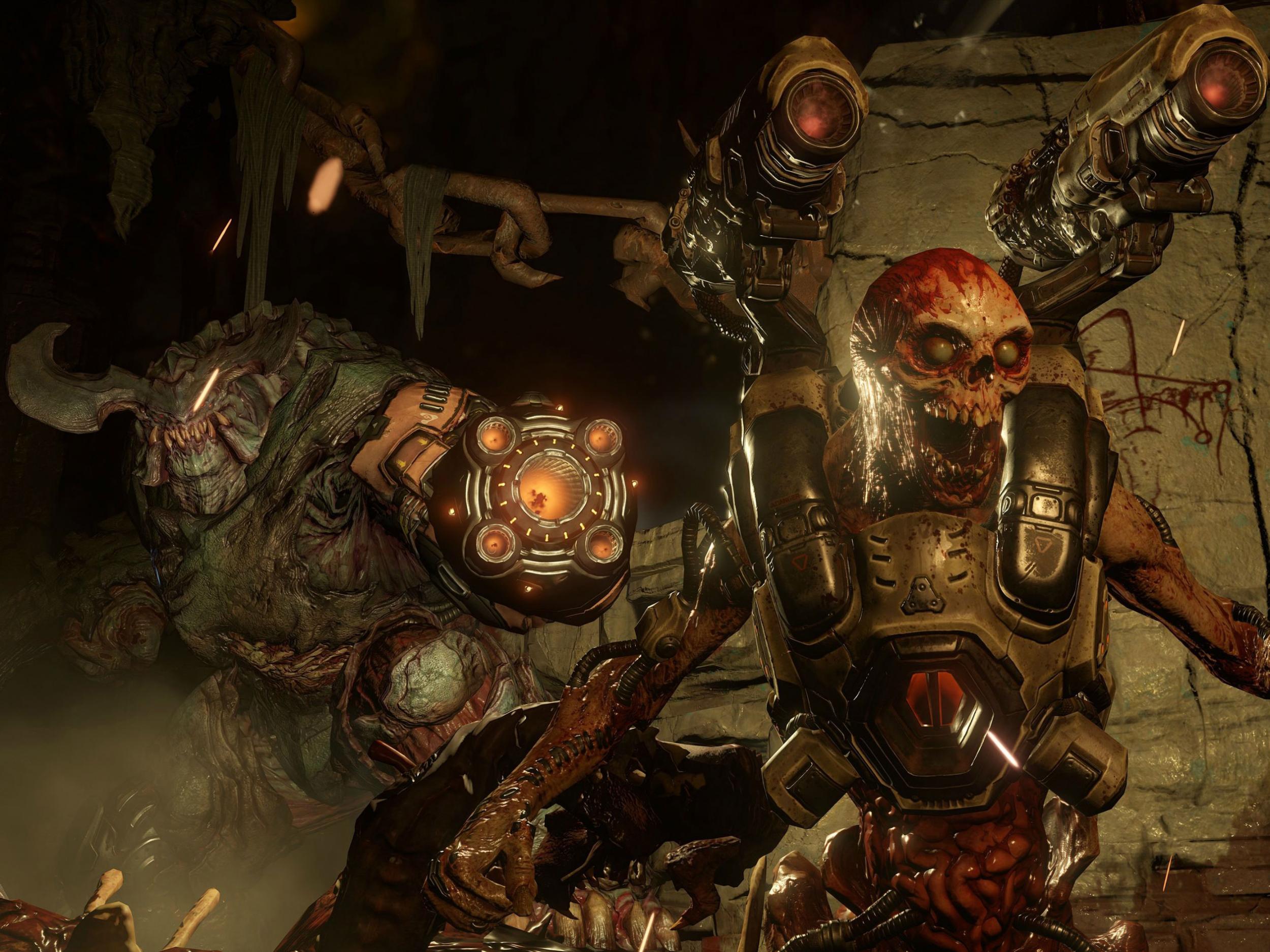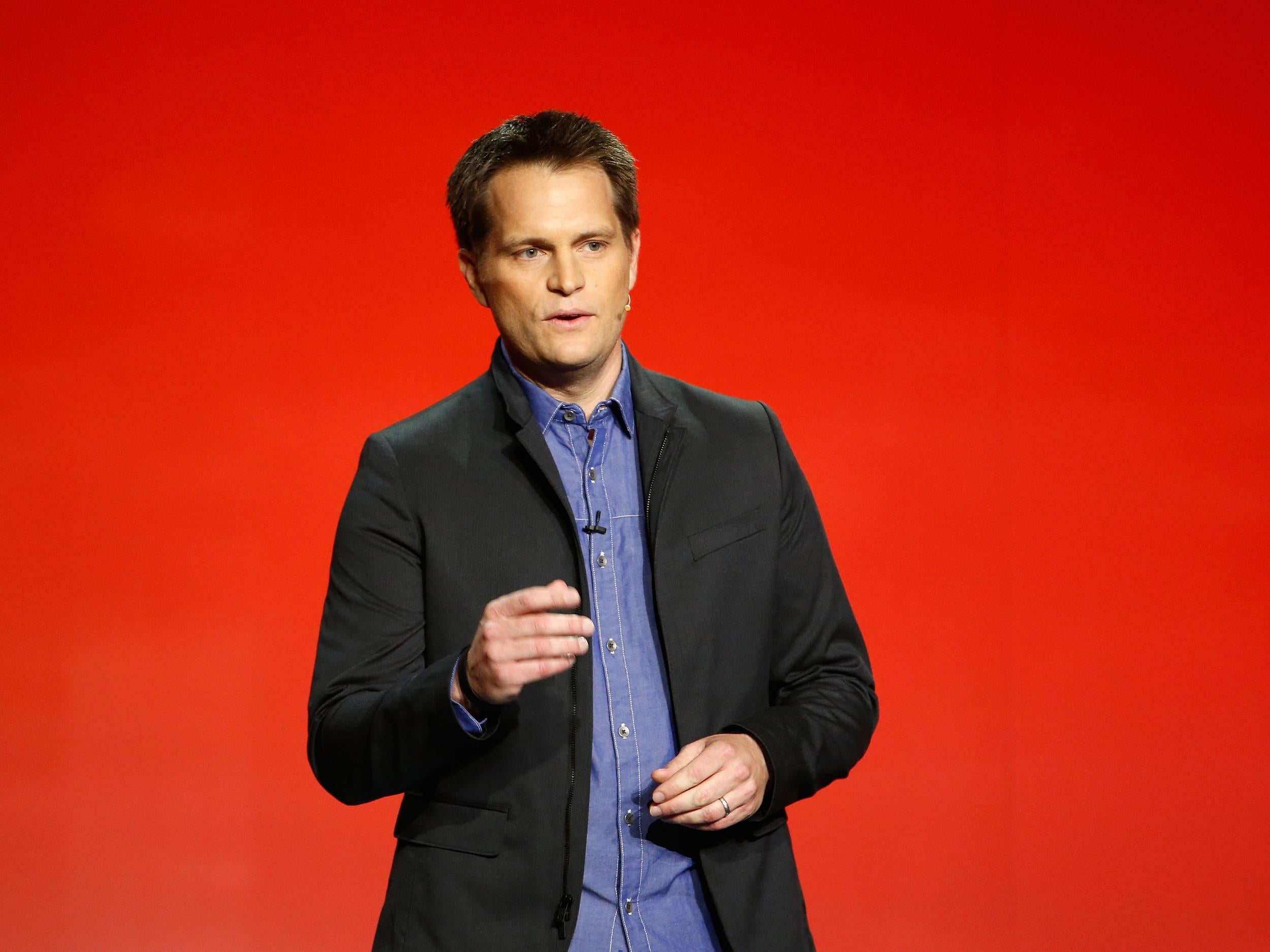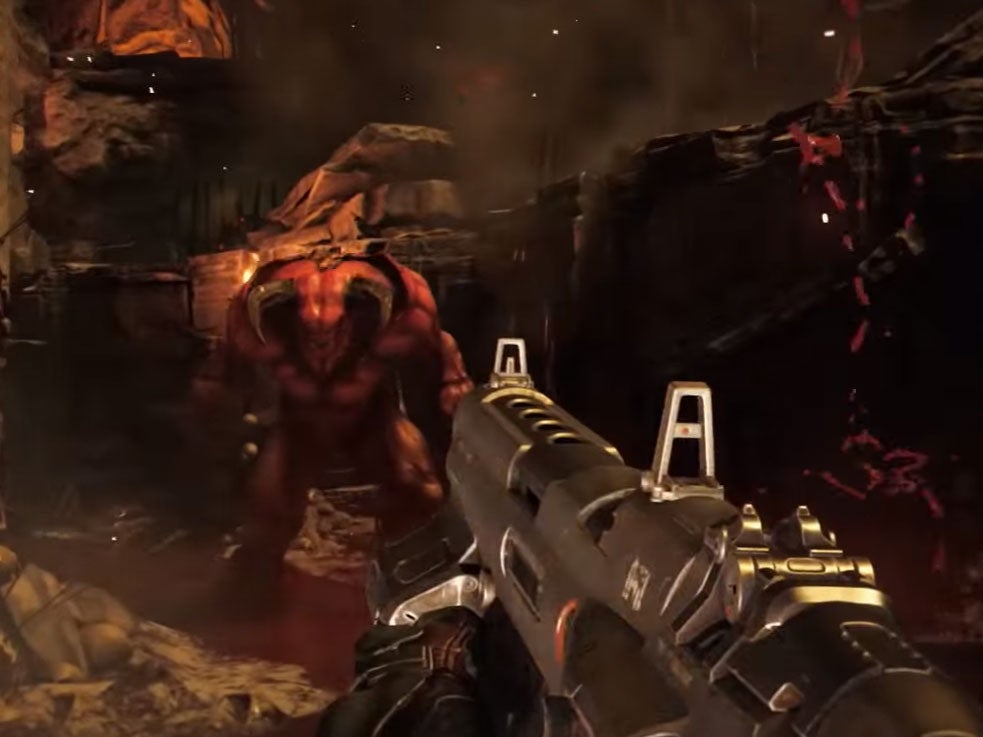The man behind Doom on the blood-soaked series' new instalment and the 'people who always complain' about violent video games
Doom director Marty Stratton speaks to The Independent about violence, gaming and the long road to the game's release

After a long 12 years since the last instalment and a few painful delays in development, Doom is coming back.
This year's version of the fast-paced demon-killing shoot 'em up is set for release on Friday 13 May, and the fans are frothing at the mouth.
Details of the game's style, weapons and features have been trickling out of id Software's Texas office for months, and they've been predictably mad.

It's all there in the trailers - demons getting blasted in the face with shotguns, horrific ogres being eye-gouged with their own teeth, and all kinds of nasties being crushed under the marine's boot. Those who were hoping the new game would see Doom return to its roots have had their prayers answered.
Doom wouldn't be Doom without a bit of controversy, however. After the first trailer for the new game was revealed at E3 in 2015, outrage quickly spread among a vocal minority of critics over the blood and gore.
Fortunately for Doom's acolytes, the game's director, Marty Stratton, doesn't seem to care that much.
"There's always somebody who's going to complain about something," he told The Independent. "But part of the DNA of Doom is violence and a bit of irreverence. We haven't shyed away from that, and it's been part of our philosophy to keep it in."
Criticising Doom for being violent may seem similar to slamming 50 Shades of Grey for being too explicit. Ever since the first Doom practically invented the FPS genre in 1993, violence has been its staple. And anyway, you're playing the good guy.
"Honestly, you're just killing demons," Stratton said. "It's not like you're going out and mowing through 1,500 humans, like you do in some games. You're in these fights with pinkie demons and barons of hell, and possessed zombies with holes in their heads. I think it's all in good fun."
It certainly looks that way. But will it pay off? Doom is a legendary series, but there's a whole generation of gamers who grew up without it. Anyone who got their first console after 2000 was probably raised on more serious, realistic, and sometimes politically-charged FPS games, like Call of Duty. Creating a modern, exciting title while still keeping all the classic Doom hallmarks was one of the developers' biggest challenges, Stratton says.
"Doom has a tremendous legacy that most of us have been a part of either as gamers or developers for most of our lives. So you've got that to consider, but you also want to make a game that appeals to somebody who has never played a Doom game."
"The goal of everything we've done is making the game very mindful, respectful and true to what Doom is, but also making it very relevant to gamers today."
The embodiment of this mindset is SnapMap, a mode which could only work in the age of constantly-connected gaming. SnapMap is a custom map and game mode creator tool for multiplayer battles, and allows players to build their own arenas to tackle, sharing them with their friends or the wider online community.
Doom has always been a favorite for modders, and even 22 years after the first game came out, people are still making their own maps and participating in the community.
Although SnapMap is a slightly more refined tool, it's carrying on this legacy, encouraging people to play around with the game and mould it in their own image.
"I'm really excited about SnapMap," Stratton said. "It was fundamentally borne out of the Doom community, and there's going to be things coming out of it that we absolutely didn't expect at all. I think that promise is what makes it particularly thrilling."
"I don't use our development tools because I'm more from the production side, but I can sit down at SnapMap and make completely new game modes. So just on a personal level it's unbelievably rewarding."
Some people at id Software may wish they could have used SnapMap to build the whole game from the start. Doom was first announced back in 2008, but a series of delays and a period of reported 'development hell' kept it from the public. According to Stratton, the feeling of it finally being ready for release is similar to "having a kid go off to college."

"[Doom] is one of those things you go in to knowing it's going to be challenging and a lot of work. Something like this is going to be all-consuming, and it has been. But it's been the experience of a lifetime."
Bringing the videogame equivalent of Citizen Kane to modern audiences was always going to be difficult, and many players said the developers hadn't struck the correct balance after April's open beta. Id Software have had to please two very different audiences with Doom, and we'll have to wait until after launch day to see if they've managed it.
At the very least, when you hear Stratton talking animatedly about "ripping a demon's arm off and beating him with it," you know there's going be no shortage of blood.
Doom releases worldwide for PC, PlayStation 4 and Xbox One on Friday 13 May.
Bookmark popover
Removed from bookmarks